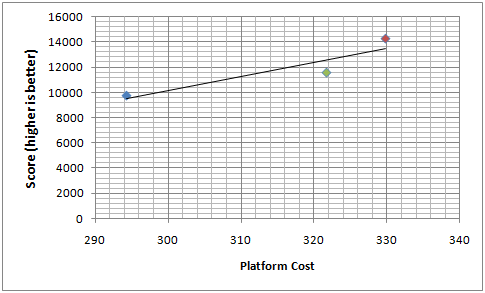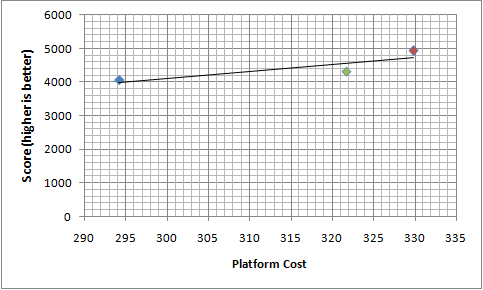Maxon Cinebench 10 x64
Website: CinebenchMaxon Cinebench is based on Maxon's popular animation software, Cinema 4D, which is used extensively by studios and production houses worldwide for 3D content creation. We've used the built-in CPU benchmark, which uses a 3D scene file to render a photo-realistic image of a concept bike. The scene makes use of various CPU-intensive features such as reflection, ambient occlusion, area lights and procedural shaders.

The multi-threaded Cinebench performance for the 720 Black Edition is as we expected - it splits the dual and quad core Intel CPUs. Four cores top, three second, two at the bottom, however the difference between Q6600 and 720 Black Edition is 23 percent, compared to just 18 percent to the E7500. The green blob on the graph above is below the line then, but not by much, and dropping the platform cost just £10 will see it into a positive value.

In much the same as above, the faster single core performance of the 4.2GHz E7500 rules the roost here, with the Q6600 at 3.5GHz snapping at the heels of the 3.7GHz 720 Black Edition. The AMD is therefore closer to the shallower trendline in the graph above, and has about the same £10 difference in platform cost to make it a positive value.

MSI MPG Velox 100R Chassis Review
October 14 2021 | 15:04









Want to comment? Please log in.